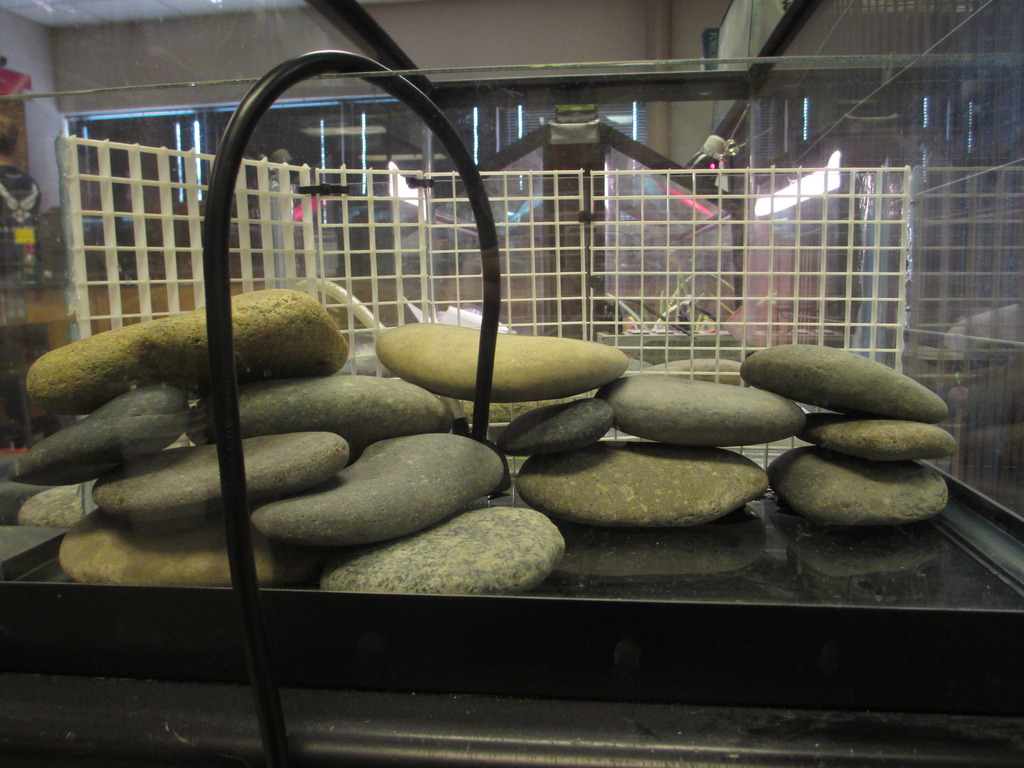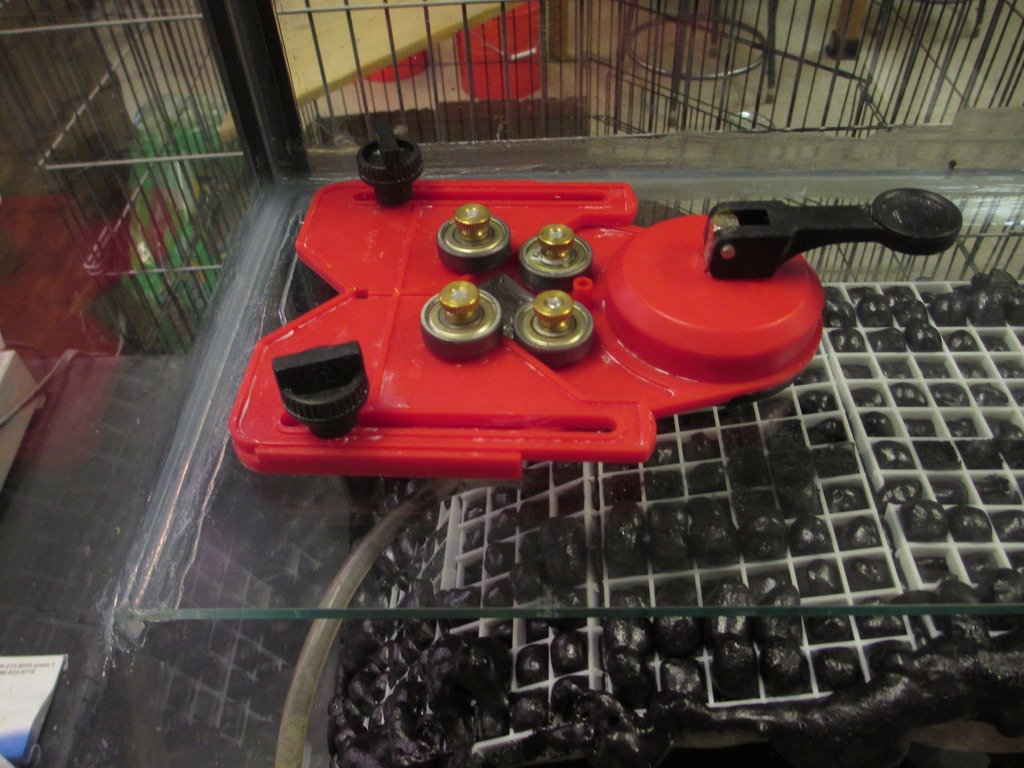Wy Renegade
Aquarium Advice Addict
So some of you may remember the original attempt at a paludarium dedicated to Tiger salamanders http://www.aquariumadvice.com/forums/f136/wy-renegades-30gal-paludarium-192117.html It turned out to be far too small for the salamanders, and ended up with some leak issues, so it is currently back on a back burner waiting to become my first ‘el natural’ tank. However, the salamanders still needed a home, so this semester we are in the process of attempting to create the perfect Tiger salamander habitat.
Tank:
The tank is a 40 gallon breeder turtle-tank aquarium (36"x18"x17" - really only 9"). Since my goal is a paludarium setting, the tank will only be about 1/3 full of water. To provide for the waterfall and stream, we will drill the dividing glass for a single bulkhead.
Equipment:
Filter: Aquaclear 20
Lighting: Aqueon strip light w/ standard aquarium bulb and an Aqueon twin tube strip light w/ one standard aquarium bulb and one Floraxam plant bulb
Scape:
The tanks scape will be created using a combination of silicone, Great Stuff Pond Foam, River rock, and driftwood.
Substrate:
Aquatic: assorted sized river gravel – so that if the salamanders go fishing, we don’t have to worry about them swallowing sand.
Terrestrial; organic potting soil covered with leaves and dried spagnum moss and driftwood pieces.
Fauna:
Invertes: daphnia, planaria, rotifers, scuds, tubifex worms to start, additional varieties will be added as they are acquired
Vertebrates:
Tiger Salamanders (x2)
Fish will most likely be some type of nano livebearer, possibly endlers (if I can get my hands on some) or White Cloud Mountain minnows
Flora:
Emergent: Forget-Me-Nots and Mint to start, will add others as I get a chance
Floating: water hyacinth
Submergent: hornwort, maybe some bladderwort if I can find some
Terrestrial: bonsai plant, moss, and a native fern
Set-up: 40B turtle tank. The tank will end up being about 2/3 terrestrial habitat and 1/3 aquatic. To accomplish that, we divided the tank into approximate thirds using a glass pane and silicon. Of the third that is aquatic, a little less than 1/2 will be a bog type environment, contained behind a wall consisting of natural river stone and foam. The remaining portion will be aquatic with a sand substrate. the wall dividing the aquatic portion will be curved and sloped on one side to allow the salamanders access to and escape from the water. The terrestrial portion will contain a small waterfall and flowing stream (at least in theory, we will see how my glass drilling and epoxy skills stand up to the test).
So since I know everyone likes photos, here are a few shots of the build getting underway.
We did a lot of dry stacking to try and get a concept;

Finally it was time to just get started;


Tank:
The tank is a 40 gallon breeder turtle-tank aquarium (36"x18"x17" - really only 9"). Since my goal is a paludarium setting, the tank will only be about 1/3 full of water. To provide for the waterfall and stream, we will drill the dividing glass for a single bulkhead.
Equipment:
Filter: Aquaclear 20
Lighting: Aqueon strip light w/ standard aquarium bulb and an Aqueon twin tube strip light w/ one standard aquarium bulb and one Floraxam plant bulb
Scape:
The tanks scape will be created using a combination of silicone, Great Stuff Pond Foam, River rock, and driftwood.
Substrate:
Aquatic: assorted sized river gravel – so that if the salamanders go fishing, we don’t have to worry about them swallowing sand.
Terrestrial; organic potting soil covered with leaves and dried spagnum moss and driftwood pieces.
Fauna:
Invertes: daphnia, planaria, rotifers, scuds, tubifex worms to start, additional varieties will be added as they are acquired
Vertebrates:
Tiger Salamanders (x2)
Fish will most likely be some type of nano livebearer, possibly endlers (if I can get my hands on some) or White Cloud Mountain minnows
Flora:
Emergent: Forget-Me-Nots and Mint to start, will add others as I get a chance
Floating: water hyacinth
Submergent: hornwort, maybe some bladderwort if I can find some
Terrestrial: bonsai plant, moss, and a native fern
Set-up: 40B turtle tank. The tank will end up being about 2/3 terrestrial habitat and 1/3 aquatic. To accomplish that, we divided the tank into approximate thirds using a glass pane and silicon. Of the third that is aquatic, a little less than 1/2 will be a bog type environment, contained behind a wall consisting of natural river stone and foam. The remaining portion will be aquatic with a sand substrate. the wall dividing the aquatic portion will be curved and sloped on one side to allow the salamanders access to and escape from the water. The terrestrial portion will contain a small waterfall and flowing stream (at least in theory, we will see how my glass drilling and epoxy skills stand up to the test).
So since I know everyone likes photos, here are a few shots of the build getting underway.
We did a lot of dry stacking to try and get a concept;

Finally it was time to just get started;


Last edited:



















